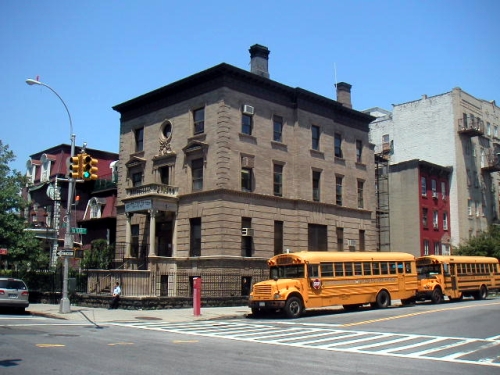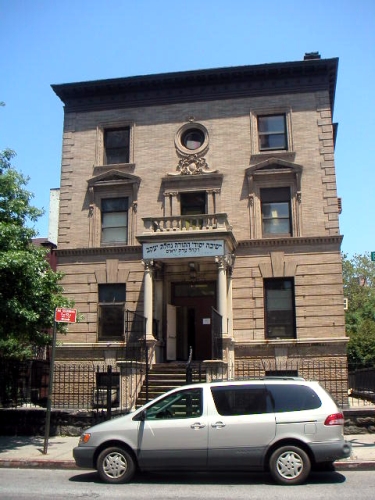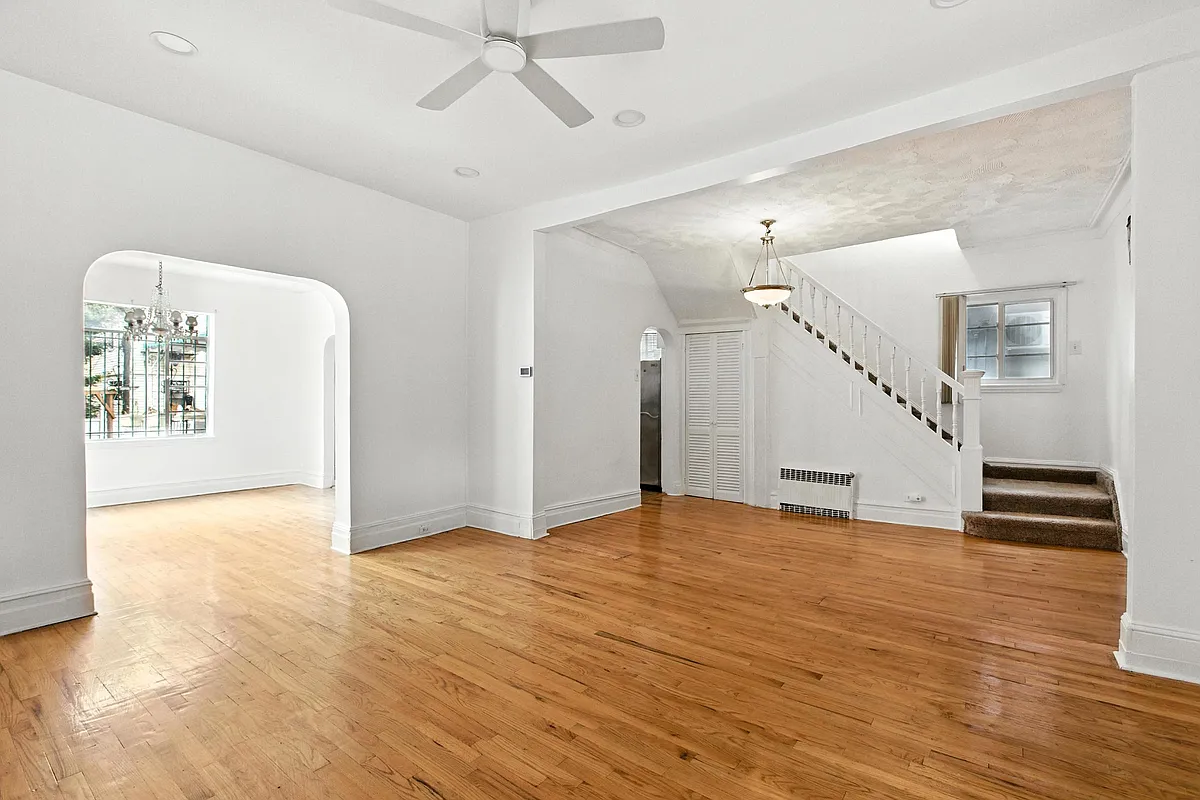Building of the Day: 505 Bedford Avenue
Brooklyn, one building at a time. Name: Originally Frederick Mollenhauer House, then Congress Club, now Yeshiva Yesoda Hatora of K’Hal Adas Yereim. Address: 505 Bedford Avenue Cross Streets: Corner Taylor Street Neighborhood: Williamsburg Year Built: 1896 Architectural Style: Renaissance Revival Architect: Lauritzen &Voss Other works by architect: Lauritzen-Union League Club, Offermann Building; various mansions and…

Brooklyn, one building at a time.
Name: Originally Frederick Mollenhauer House, then Congress Club, now Yeshiva Yesoda Hatora of K’Hal Adas Yereim.
Address: 505 Bedford Avenue
Cross Streets: Corner Taylor Street
Neighborhood: Williamsburg
Year Built: 1896
Architectural Style: Renaissance Revival
Architect: Lauritzen &Voss
Other works by architect: Lauritzen-Union League Club, Offermann Building; various mansions and firehouses throughout Brooklyn
Landmarked: No
The story: Frederick Mollenhauer was the son of John Mollenhauer, the founder of the Mollenhauer Sugar Refinery, one of Brooklyn’s Big Sugar operations, founded in 1867. The sugar refining business was Brooklyn’s largest industry in the late 1800s, and Mollenhauer, along with the Havermeyer and Moller families, owned most of it. So it is rather fitting that Frederick should have a grand mansion built in Williamsburg, near his family’s business. Bedford Avenue was the most prominent street in Williamsburg at that time, and there were many fine mansions and clubs located near this house, many of them built or remodeled in the late 1880s through the 1890s.
Mr. Mollenhauer enlisted the talents of Lauritzen & Voss to design his house, and they came up with a large, very classy Italian palazzo, quite elegant on the outside, but not overly ostentatious. The three stories plus basement house takes advantage of the corner lot, with lots of side windows and a full height extension. It’s a 35-by-50-foot house, with 5,250 square feet of space. Quite a fine Brooklyn mansion.
Frederick Mollenhauer became vice president and treasurer of the National Sugar Refinery in 1900; a company formed by the merger of his family’s refinery and two others. Like most very wealthy men of his day, he also had his business fingers in many pots, and was on the board of several banks, a mortgage company, railroads and other lucrative concerns. He also belonged to several yacht clubs, and the best social clubs, and was a generous philanthropist. When he died of heart disease, here at 505 Bedford, in 1914, he was only 54.
Lauritzen and Voss were no strangers to Bedford Avenue. In 1891, they had remodeled a nearby mansion a couple of blocks away on Bedford and Hawley Street into the Hanover Club. Peter J. Lauritzen had also designed two side-by-side mansions for another sugar baron, the Jost Moller family, on St. Marks Avenue in the St. Marks District, now Crown Heights North. Those two houses date from 1895-96, and although very different, share the Renaissance Revival characteristics of light-colored Roman brick and classical detailing. Lauritzen could have been familiar to Mollenhauer through the Hanover Club, of which he was a member, or perhaps from the Moller’s. Connections have always gotten people jobs.
At any rate, after Frederick’s death, the family moved, and the Mollenhauer house also became a club; the Republican Party’s Congress Club, which had formerly been up the street at 586 Bedford. The first reference to the Club being at this location that I could find was from 1924, when one of the members, a Civil War captain, died in his room at the club from gas fumes. I do not know how long they were here before they too were gone. This part of Williamsburg became home to the Satmar community beginning in the 1950s, and today the Mollenhauer mansion is a yeshiva. GMAP
(Photographs from nyc-architecture.com)






What's Your Take? Leave a Comment